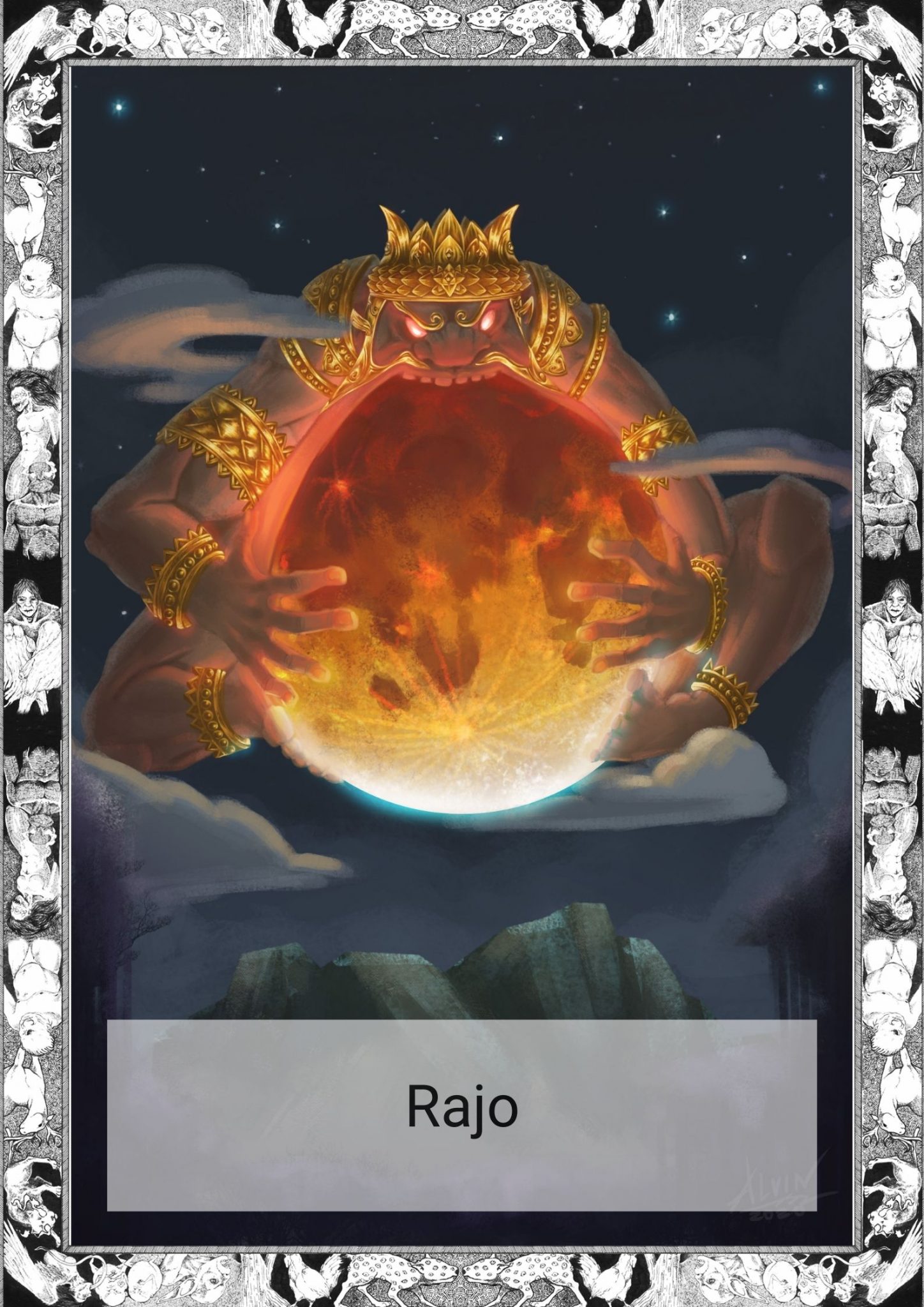
There is a tale passed down from the gods about the giant and the moon.
They speak in hushed tones about what transpires every eclipse yet will not take responsibility for their part of the story.
It began on the slopes of Mount Macolot.
Now the gods were careful about their mysteries. They knew that if mortals would gain access to their secret pandemonium would occur and the world would be changed forever.
So, they hid their elixir away from the prying eyes of mortals, and with it, the mystery of immortality.
That is, until the giant came.
To this day the gods are unclear about how the giant tasted the elixir.
Some say the giant snuck his way in and hid beneath a rock, eavesdropping on the conversations of the gods.
Others say the giant was a mortal ruler in disguise that spied on the gods until he saw how the elixir was made.
In another land they say that the giant was a demon that was tricked by the gods. In this story the gods and demons churned the milk ocean to extract the elixir (called the amrita). The sun and moon noticed him, though at this point the demon had imbibed the elixir and was thus immortal. Its head was cut off and both the head and its body chased the moon and the sun during eclipses.
However the giant managed to get a taste of the elxir, the result was the same.
The knowledge of the elixir and of eternal youth was spread through the lands of men.
The gods did not let that stand, of course. Angered by this trespass they searched in vain for the perpetrator. That is, until the moon answered their calls.
The gods demanded that the moon tell them who took the secret of the elixir and the moon surrendered the giant.
The giant, in turn, chased the moon and tried to swallow it up.
From there the world of men would never be the same for it was then that mortals noticed the eclipse of the moon.
The gods have since been careful about the secret elixir of immortality, hiding its mysteries from mortal and demon alike.
=————————=——————————=
Written by Karl Gaverza
Copyright © Karl Gaverza
Adapted from Aurelio P. Arguelles. Batangas Folktales. From the National Library of the Philippines, H. Otley Beyer Ethnographic Collection. http://nlpdl.nlp.gov.ph/OB01/NLPOBMN0037001055/home.htm and Jose P. Caedo. “Kinain ñg Lajo.” From the National Library of the Philippines, H. Otley Beyer Ethnographic Collection. http://nlpdl.nlp.gov.ph/OB01/NLPOBMN0037001056/home.htm
Rajo Illustration by Alvin Gasga
FB: The Art of Alvin Gasga
